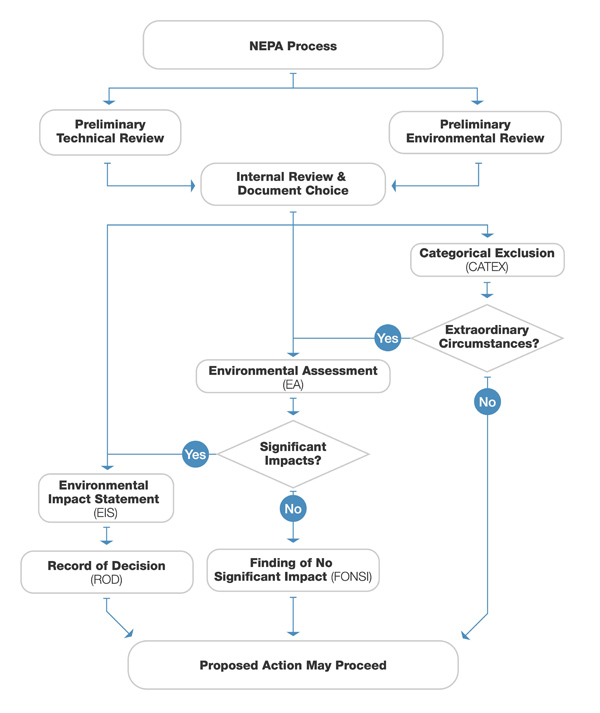How does the FAA do Environmental Review?
The FAA's primary mission is to provide the safest, most efficient aerospace system in the world. National Environmental Policy Act (NEPA) compliance and other environmental responsibilities are integral components of that mission. The FAA is responsible for complying with the procedures and policies of NEPA and other environmental laws, regulations, and orders applicable to FAA actions.
Under NEPA, federal agencies are required to disclose to decision-makers and the interested public a clear and accurate description of the potential environmental impacts that could arise from proposed federal actions. In the agency’s decision-making process, the FAA must consider and disclose the potential impacts of a proposed action and its alternatives on the quality of the human environment.
In meeting its NEPA obligations, the FAA should seek to achieve the policy objectives of 40 CFR § 1500.2 to the fullest extent possible. Once the FAA determines that NEPA applies to a proposed action, it needs to decide on the appropriate level of review. The three levels of NEPA review are Categorical Exclusion (CATEX), Environmental Assessment (EA), and Environmental Impact Statement (EIS). Specifically, each level of NEPA review considers the potential effects of the proposed action on the environmental resource categories identified in FAA Order 1050.1F. The FAA uses the corresponding thresholds that serve as specific indicators of significant impact for some environmental impact categories.
Consideration of a Proposed Action under the National Environmental Policy Act (NEPA)
NEPA requires that the FAA evaluate the environmental and related social and economic effects of a proposed action.
Preliminary Technical Review
FAA conducts an internal technical review before deciding to consider moving forward with an environmental review.
Preliminary Environmental Review
FAA conducts an internal environmental review to evaluate any potential environmental concerns.
Internal Review and choice of appropriate level of NEPA review
Internal analysis such as the noise screening reports as well as input from the public are used to assist the FAA in determining the appropriate level of NEPA review to conduct.
Extraordinary Circumstances
Paragraph 5-2 of FAA Order 1050.1F identifies the range of factors that define Extraordinary Circumstances.
Significant Impacts
The FAA uses thresholds that serve as specific indicators of significant impact for some environmental impact categories. FAA proposed actions that would result in impacts at or above these thresholds require the preparation of an EIS, unless impacts can be reduced below threshold levels.

